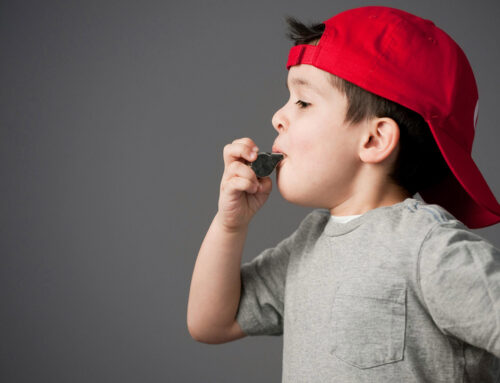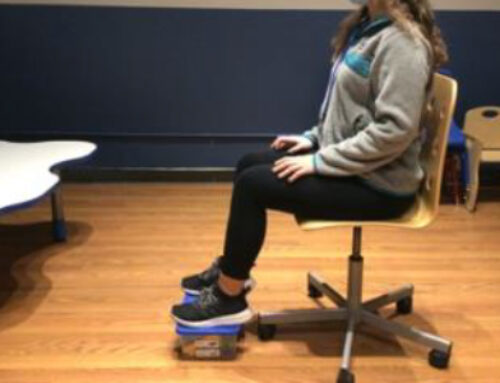Prone extension can be explained by the “Superman” pose, or when the child is laying on their stomach with arms and head elevated upwards. This position is vital for the development of your child’s anti-gravity neck and trunk extension strengthening, body awareness, and evolving vestibular system. Prone extension can usually be achieved after receiving “tummy time” as a child, which has been shown to influence several motor milestones, including rolling, crawling, and sitting. This position can be utilized as a diagnostic tool for Physical Therapists and other Therapy providers because children who have difficulty maintaining this position will likely present with other motor, balance, coordination, and sensory integration challenges.
Strengthening: Prone extension, or prone on elbows, will challenge your child to hold their head and neck up against gravity, while utilizing trunk extension and shoulder girdle stability to maintain upright. This position assists with developing the postural muscles required to sit upright and maintain a neutral spine positioning, and while maintaining neck stability when pulling up to sit. Children with low tone or who have not developed these postural muscles will typically sit with forward flexed sitting posture and rounded shoulder positioning, which will affect the overall development of their spine. In addition, this may impact functional activities, including their ability to attend to academic activities, feeding, and seated play with peers. By holding their neck and trunk up against gravity, they are developing the strength required to reverse this forward flexed position, which will allow them to maximally participate in play and academic tasks, while promoting proper spine development.
Sensory Integration: Prone extension is also beneficial for promoting development of your child’s sensory system. Prone extension will assist with developing your child’s vestibular system by increasing tolerance and understanding of movement between different positions. Prone extension encourages oculomotor development, by extending their head and eyes upward to visually explore their environment. This position also allows for proprioception (the sense of touch) over the front side of their body, which will promote awareness of their body in space. While in prone, your child will also receive deep pressure input over their body surface touching the ground and joint compression through their shoulder girdle, which will also improve their sense of body awareness. Overall, developing skilled performance of motor activities results in the child’s ability to match neural connections to visual (sight), vestibular (motion), and somatosensory (touch) input. Developing connections between these body systems will maximize your child’s ability to skillfully motor plan and participate independently in activities of daily living.

How do we target prone extension?
Blue Bird’s Physical Therapy Team targets prone extension in a variety of ways. Listed below are some suggestions of how you can promote prone extension at home.
- Laying on their tummy while playing with games, puzzles, and engaging in tactile play.
- Scooting on a scooter board while walking hands reciprocally or pulling a rope.
- Army crawling through tunnels or over dynamic surfaces.
- Playing “Airplane” or “Superman” by lying in prone on therapist/parents’ legs and reaching forward.
- Swinging in prone on the platform swing.
- Laying on stomach on a stability ball while performing a dynamic reaching activity.
- Log rolling! Rolling will assist with transitioning in and out of prone extension, while utilizing global core musculature, trunk rotation, rolling mechanics, and proprioception.
Blue Bird Day’s Physical Therapists use our state-of-the-art gross motor gyms to develop your child’s strength, balance, and endurance, but many exercises can be modified to target prone extension without the use of fancy equipment. We recommend reaching out to your child’s therapy team for tailored recommendations on how to target prone extension at home.

Blue Bird Day fosters socialization, sensory regulation, and pre-academic learning in children ages 2-7 years in therapeutic rotations that simulate preschool and kindergarten settings. Our compassionate therapists practice a relationship-based and family-centered approach, provide parent training, and collaborate on goals and individualized intensive treatment plans for your child.
We believe in a collaborative and multi-disciplinary team approach to therapy. A team of occupational therapists, speech-language pathologists, dietitians, developmental therapists, behavioral therapists, physical therapists, and therapeutic assistants are created for each child to ensure child and family are fully supported and the best possible results are achieved.
Options for individualized, group and virtual therapy sessions are available as well.
Want to learn more or you have a specific question? Feel free to connect with us here!



